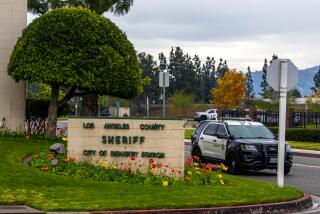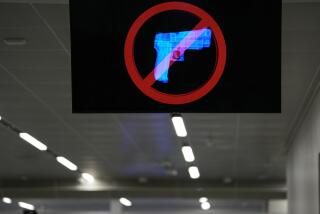Challenging eyewitness evidence
- Share via
The Supreme Court this week made it harder for criminal defendants to challenge one of the most common flaws in the criminal justice system: the use of mistaken eyewitness evidence. The 8-1 decision needlessly narrows the ability of judges to suppress eyewitness testimony marred by inconsistency or other indications of error, leaving the task of evaluating the reliability of such evidence to juries.
Statistics show that 76% of 250 convictions overturned since 1989 because of DNA evidence involved mistaken eyewitness identification. A host of factors can lead to mistakes. Most are attributable to manipulation by the police, such as lineups or photo arrays in which the suspect is grouped with people who look nothing like him. There is also evidence that a witness has a harder time making a correct identification when he and the suspect are of different races.
Courts, legislatures and police departments admirably have taken steps to prevent officers from unduly influencing witnesses. For example, 21 police departments in California conduct “blind” photo lineups, in which the person administering the viewing doesn’t know who the suspect is. Perhaps most important, the Supreme Court has ruled that judges may suppress eyewitness testimony before trial if there is evidence that police “have arranged suggestive circumstances leading the witness to identify a particular person as the perpetrator of a crime.” This is an important safeguard because jurors tend to give too much weight to eyewitness testimony, even if the judge advises them that it can be fallible for various reasons.
But what if flaws in eyewitness identification aren’t the result of police action? That was the issue in the case decided this week. The decision upheld the conviction of a New Hampshire man arrested in a parking lot late at night carrying two car-stereo amplifiers. A woman in a nearby building reported seeing a “tall black man” looking into cars; she then pointed out Barion Perry to police officers. Later, however, she was unable to identify Perry from a photo array. The judge refused to exclude her identification, leaving a judgment on its reliability to the jury.
Writing for the court, Justice Ruth Bader Ginsburg said that judges shouldn’t be able to suppress eyewitness testimony in cases like Perry’s because the purpose of suppression is to deter police from manipulating eyewitness identifications. In dissent, Justice Sonia Sotomayor offered a broader and more convincing justification for excluding inconsistent or otherwise suspicious eyewitness testimony. The “driving force” of previous decisions wasn’t deterrence of police misconduct, she said, but ensuring that eyewitness testimony was reliable to avoid a miscarriage of justice. It’s disappointing that her view didn’t command a majority of the court.
More to Read
A cure for the common opinion
Get thought-provoking perspectives with our weekly newsletter.
You may occasionally receive promotional content from the Los Angeles Times.






